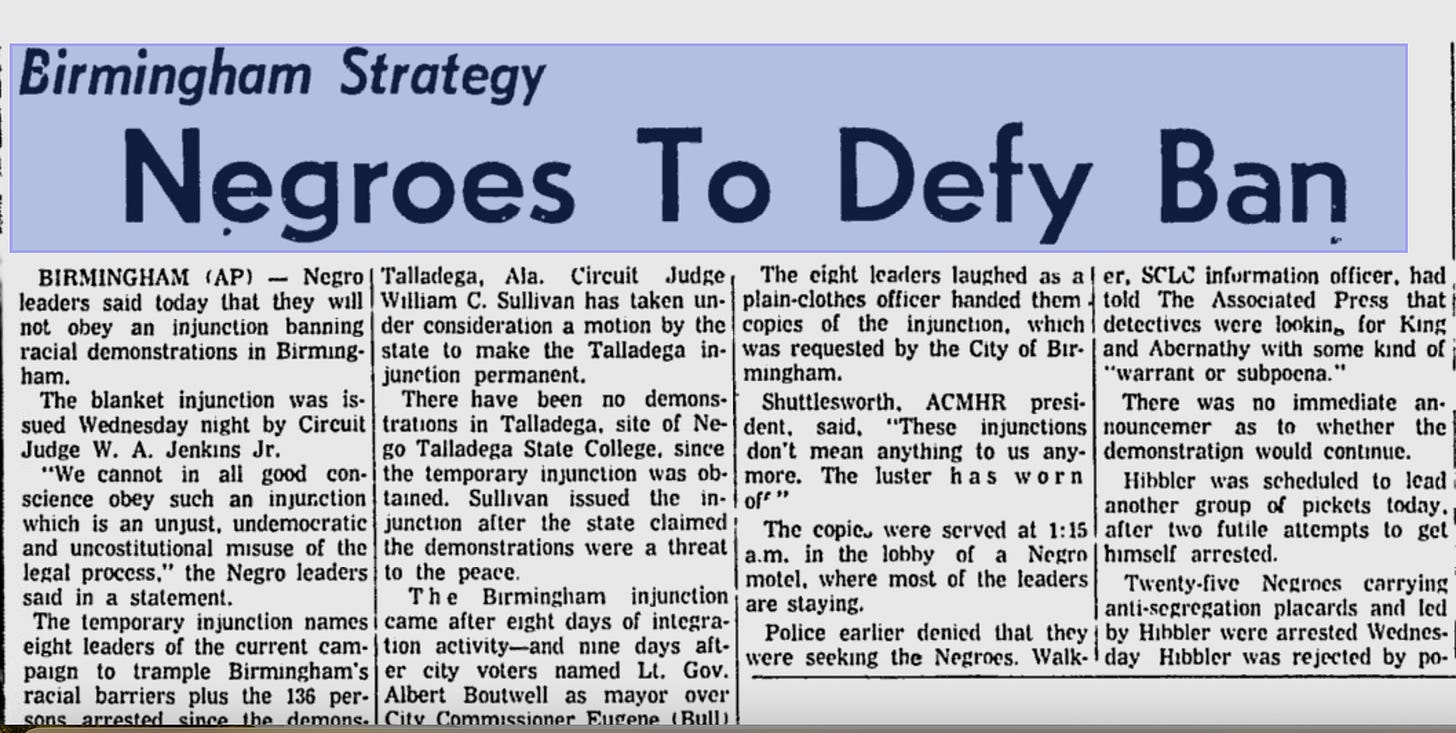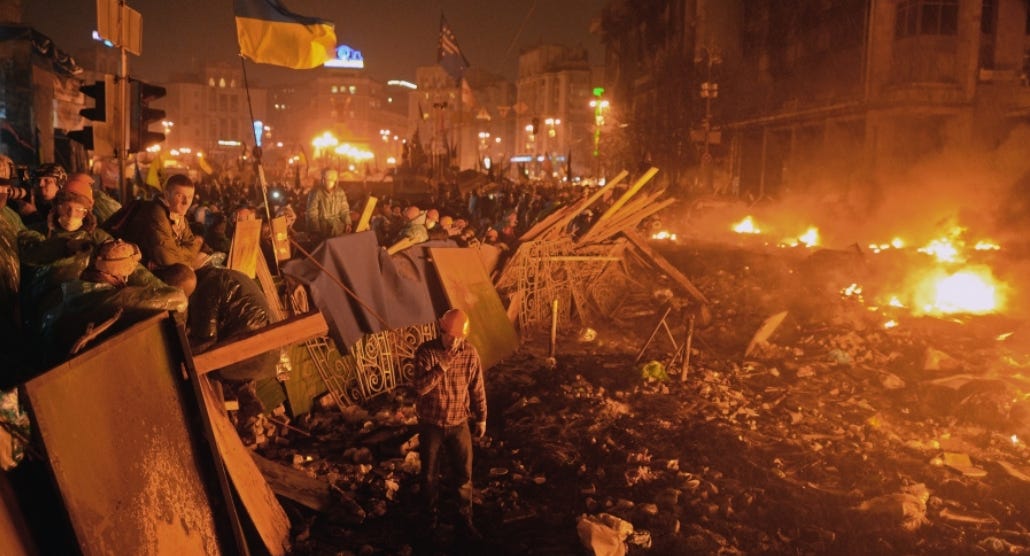It is hard to accept if you are an American born in the numerical middle of the American Century that all the good stuff about your country was frontloaded, and that most of your adult life would be spent in a long slow ebb tide. This culminated in last week’s service of divorce papers on the Alliance that rebuilt Europe after World War 2, outlasted the Soviet Union, and served, even in a flawed state, as the guarantor of an idea of liberty and freedom of conscience around the world. How much further can the tide run out?
If you look at Vice-President J. D. Vance’s speech at the Munich Security Conference on 15 February 2025, it would seem the tide can still go out a lot further. (And to all the citizens of the nations who have made common cause with a US they thought was a force for good, my apologies. That is no longer the case.)
What should we do? How do we stop this overreach by a regime that did not even receive a majority of the vote in last November’s election? Variations on these questions have been all over social media in recent weeks. People against the elective coup underway in Washington are in a state of panic because there is no obvious mechanism to stop what is going on. What can we do? What is to be done?
Lenin’s famous 1901 pamphlet, “What Is To Be Done?” (title lifted from an 1863 novel by Nikolay Chernyshevsky) was written to develop ideas first mentioned in the revolutionary’s previous pamphlet, “Where to Begin?” These essays appeared in Iskra, a fortnightly newspaper published by exiled Russian Social Democrats and then smuggled back into Russia.
I’m not referring to Lenin because I am a Bolshevik or endorse a Marxist plan for the economy. Before this crisis is over I will probably end up quoting the Comte de Mirabeau, my favorite French Revolutionary, as well as Thomas Jefferson and Tom Paine. |(Actually, I did quote Tom Paine in a recent FRDH podcast.)
No, the reason I am quoting Lenin is this sentence from the end of the lengthy pamphlet: his summary of the situation in Russia at the beginning of the 20th century
“We are passing from the sphere of history to the sphere of the present and, partly, of the future.”
One of the reasons the half of America that hates the Trump regime is asking, “What is to be done?” and “Where to begin?” is this sense of dislocation from historical precedent. We are no longer in history’s sphere we are in a terrible present pointing towards an awful future.
What is to be done?
The first thing people have thought about is protest marching against the government. But remember the good stuff was frontloaded. For those of us who were in adolescence and early adulthood in the 1960s — 60 years ago —people marched for just causes and our actions brought success. African-American civil rights were re-instated, voting rights restored, segregation ended in the South. And while marching did not end the Vietnam War — the soldiers of the North Vietnamese Army did that — marching did force a major drawdown of American troops from their peak in 1968.
For Democrats and people further left on the political spectrum, particularly, marching as a tactic to bring about political goals became a prisoner of its success. Over the ensuing 50 years marches became an opportunity for re-enactment of these great successes.
Here’s just one example: The Million Man March of 1995, brought African-American men back to the site of Dr. Martin Luther King’s “I Have a Dream” speech, the Mall in Washington DC. But the 1963 March on Washington for Jobs and Freedom, it’s full name, had been part of a strategic drive to restore the civil rights granted by the post-Civil War Reconstruction Amendments.
King by the time of the March on Washington was a major political figure, in negotiation with the Kennedy White House over whether to stage the demonstration or not. He made the tactical decision to go forward with it. The march’s success, followed 90 days later by the Kennedy Assassination, provided the momentum for Lyndon Johnson to get Congress to push through his great civil rights legislation.
You could write a book about the history of protest marching in America post-Civil Rights era and its diminishing returns.
Decade after decade people went on marches. They became ritualized: a chance to touch the success of the past, this is how they did it in 1965 or 1969. Increasingly demonstrations became social occasions to come together with like minded people for a day out and say loudly to the world:
ME NO LIKEE
What people who support causes like gun control or who were against the Iraq War, lost sight of was that the reason the civil rights’ marches brought about change was the people who went on them were willing to go to jail and risk death.
A few months before the March on Washington, Martin Luther King had led a coordinated campaign to end segregation in Birmingham, Alabama. A local judge issued a blanket injunction against “"parading, demonstrating, boycotting, trespassing and picketing".
King defied the order and was put in jail. Although a national figure he did not receive soft treatment. He was held for eight days before being released on $160,000 bail paid by the United Auto Workers union. During his brief incarceration he wrote the Letter from Birmingham Jail.
Time is an essential part of political strategizing. It is time which imposes a need for patience at some points in a process of change, and it is time which commands urgency.
In the Letter he expressed frustration at the pace of change. For a quarter of a century, African-American civil rights leaders had been patiently chipping away at segregation in the courts. Their focus was on desegregating public schools and universities. This culminated in the Supreme Court’s Brown v Board of Education decision which finally ended the idea of separate but equal in education. King’s work was to take this judgment and end separation-segregation as law in all areas of life itself. For him the time of patience was now over:
“We know through painful experience that freedom is never voluntarily given by the oppressor; it must be demanded by the oppressed.”
It is worth noting that the Letter was addressed to King’s fellow clergymen, and that what marching is for Democrats, going to church is for the political Christians who have long provided the grassroots energy of the Republican party as it evolved from Ronald Reagan conservatism to Trump’s MAGA. For forty years these political Christians (it is an insult to true evangelical worshippers to call them evangelicals) worked patiently to overturn Roe v Wade.
Time was also a factor for Lenin. When he wrote What Is To Be Done? He had already served a three year term of internal exile in far eastern Siberia and then emigrated to Europe. The Bolshevik take-over of the Russian state would take another 16 years. Nearly twenty years of relentless focus towards reversing the tide of history. And then the moment of urgency.
Does the present crisis in America allow for those against the radical overhaul of our democracy to be as patient as political Christians or revolutionary Bolsheviks?
We have moved into a present where we can no longer speak of the country being run by a Presidential administration. It is a co-leadership, The Trump-Musk regime. With each passing day it puts deeper roots down.
Can people wait?
There are court cases that may slow the process. The most important relate to Musk’s seizure of treasury data and the systems of disbursement of $6 trillion in payments from the federal government. Included in this haul of data are individual income tax records. Except in very specific instances that is illegal under Internal Revenue Code Section 6103.
But can the court decisions — assuming they are favorable to those suing the government — happen quickly enough to stop the consolidation of power in the executive in a way that it doesn’t matter what party is in the majority in Congress after the midterm elections in 2026. And even if the courts rule against the Trump/Musk regime power grab will their judgments be enforceable?
One has to be doubtful. So, action now is called for.
Floating around anti-Trump social media diffused over too many platforms is the idea of a national day of economic inactivity on February 28th. The idea is to boycott companies who have scrapped their DEI departments in accordance with Trump’s wishes. A one-off event with such a narrow focus will stop nothing.
Where to begin? What is to be done — in the present, not imitating the past?
In our new era there are two examples to consider. In Israel, in early 2023, within weeks of forming his current government, Prime Minister Bibi Netanyahu attempted to radically reform the Israeli courts — using a blueprint dreamed up in contacts with America’s Federalist Society. He was attempting to make them subservient to the Prime Minister’s office. Israeli’s came into the streets against the plan. Every Saturday night, starting on January 7th 2023 a hundred and fifty thousand plus turned out in Tel Aviv and other major cities. The plans were not enacted and then October 7th happened. The demonstrations stopped. Hamas rescued Bibi.
Would a weekly show of disapproval be enough to stop the current American regime?
The best example for our current moment, with American democracy being subverted by anti-democratic authoritarians, is what happened in Kyiv’s Maidan Square beginning in November 2013. Ukraine’s then president, Viktor Yanukovych, suddenly decided not to sign an agreement for closer economic ties with the EU. This was done following pressure from Russian president Vladimir Putin.
It would take another book to go into all the details but the broad stroke is this: people turned out on Kyiv’s Independence Square (Maidan means square) to protest this turning away from Europe, and security forces got heavy-handed trying to remove them. Very quickly the protests escalated and moved beyond demanding the government sign the EU agreement. Protestors demanded the overthrow of the government itself. At its peak 400 to 500 thousand people were on the Maidan. The protest evolved into a spontaneous revolution. More than 100 protestors were killed and 13 policemen also died.
What would happen if several hundred thousand people turned up on the Mall in Washington DC between the Washington Monument and Lincoln Memorial and refused to move, even if ordered by the police. Would others join them? What would happen if several hundred thousand more folks in New York joined in, camping out around 1211 Avenue of the Americas, between 47th and 48th street, the headquarters and studios of Fox News?
What would happen if people refused to leave until their concrete demands were met — the return of all data, the disbandment of DOGE, reinstatement of the Federal work force and the dismissal of Elon Musk are some of my ideas, what are some of yours?
What would happen when they disobeyed a judge, echoing the one in Birmingham Alabama in 1963, who issued a blanket injunction against Martin Luther King and civil rights activists “parading, demonstrating, boycotting, trespassing and picketing"? Would Trump unleash state violence? Arrest? Prison? After the first onslaught would you take their place?
You can’t begin to answer “What is to be done?” until you know what price you are willing to pay.
THE LATEST FRDH PODCAST







I believe they’d use the opportunity to respond with violence & they’d use their media to back their actions. It’s why I think want to release Chauvin. They want to charge civil unrest in order to retaliate with violence. They’ve deleted the federal database of police misconduct and now have a stronger army of loyal cops across the nation.
When I began reading your article I felt what I would call Monday dismay😔, but as I continued I felt more and more a sense of hope. Because the Maidan is a symbol of what people in deep solidarity with each other and a dream of a better world can do. When I saw russian language, not knowing it came from Lenin, I thought...good grief. When Covid hit I decided I needed to learn another language and I settled on russian. When russia invaded Ukraine I turned to Ukrainian language and read many books of history ( in English ), attended online classes in Ukrainian history which Timothy Snyder made available. All that to say the Ukrainians are a Vorbild. And in Europe they are not the only ones, but the solidarity they showed was and still is a marker and a turning point. Vance, Hegseth...appalling. This regime must go, because typical patience allows the horror to grow. HHS secretary (his name should not be mentioned) firing people engaged in epidemics and such monitoring proves only that killing the population is a major part of the plan. Snyder sees these people as part of a plan of decapitation. Thank you for your writing. I am reading a stunning book now, ""The Spirit of Hope" by Byung-Chul Han. "Active hope is expressed in a refusal to put up with the badly existing. In its daydreams, this kind of hope is determined to act. Daydreams are ultimately dreams of action. They dream away the badly existing in the interest of a new and better life." I understand the Maidan in this light. It goes without saying that this democracy has been deeply flawed from the beginning, controlled too much by monied interests outside the light of day. But no one I know wants russian governance or fascism, both a threat to us and others not to mention the planet as a whole. The minority at the top...that's another story.